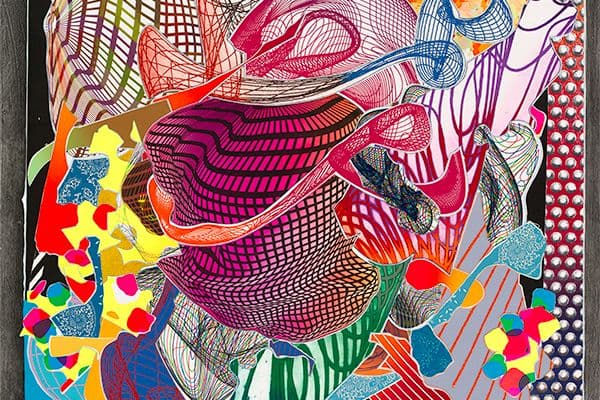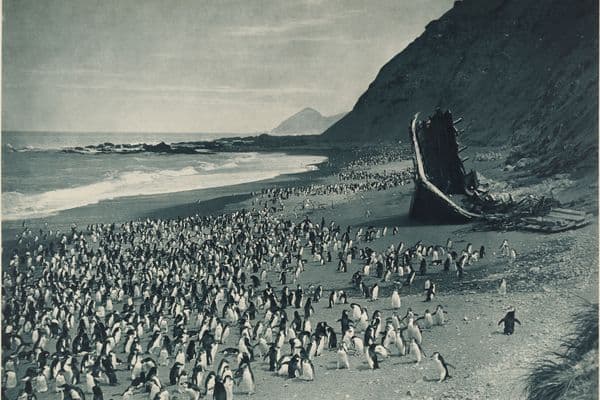The Changing Face of Work
Photography and the Industrial Age
1 Jul 1995 – 17 Sep 1995

Bill Brandt, Parlourmaid at window in Kensington, 1939, National Gallery of Australia, Kamberri/Canberra, Purchased 1985.
About
In the last decades of the twentieth century considerations of work have centred predominantly around the decline of heavy industry, dwindling job prospects and the effects of industry on the environment. Work opportunities and conditions remain the most persistently exigent issues for virtually every government and individual.
These issues have precipitated recent photographic essays such as The End of Manual Labour (1986–93) by Sebastiäo Salgado and In Flagrante (1975—87) by Chris Killip. Salgado's extensive series maps the erosion of long-held traditions and industries in specific areas such as the Cuban sugarcane cutters, fish canning factories in Galicia and the sulphur trade in Java — labour intensive industries that are no longer viable in an environment where local enterprises have become contingent on international economic circumstances. Similarly, Killip's nagging images from In Flagrante show north—east England in decline and emphasise just how vulnerable individuals are when confronted by government policies that give priority to financial figures before faces.
To establish a context for these representations of our post-industrial age, this exhibition traces the subject of labour and industry in photography during the industrial era — covering a period from the second half the nineteenth century to the 1950s.
Exhibition Pamphlet Essay
From the time of its dissemination, photography became the principal means of recording and publicising the impact of the Industrial Revolution — the growth of industry and migration of populations into cities. As Victorian Britain and, successively, other nations laid networks of railway lines and erected large, efficient mills and factories, entrepreneurs and governments were keen to have their exploits documented much as landowners had commissioned paintings of themselves surrounded by property, possessions and family. During the formative years of photography, the role of the camera seemed unambiguous— as a chronicler of the real world.
The process of change from an essentially agrarian society to an economy dominated by industry and machine manufacture was not universally welcomed. A growing demand for labour in factories and the resulting decline of rural traditions brought about a nostalgia for past times which was manifest in the works of artists and writers. In contrast to the straightforward documentation of early practitioners, the strategy of many photographers around the turn of the century was to portray a less complicated world. They studied and emulated the works of painters and printmakers such as Bastien Lepage, and Millet and Daubigny of the Barbizon School whose subjects included pastoral idylls of manual labour — seed sowing and gleaning.
The British photographer, Peter Henry Emerson, focused predominantly on agricultural labourers in the areas of Norfolk and Suffolk. As the most articulate spokesperson on the medium in his day, he advocated naturalistic photography which recorded authentic scenes of rural life. From an optical perspective also, his selective focus was intended to imitate our own eyesight rather than the precise clarity of photographic vision. In collaboration with the painter Thomas Goodhall, Emerson published Life and Landscape on the Norfolk Broads (1886) containing forty platinum photographs and detailed accounts of rural life. He approached his subject like an anthropologist, examining the social order and traditions. His portrayal of labourers and descriptions of their routines was both a nostalgic view of passing times and a plea for their conservation. In breaking the existing mould of photography — predominantly sharp, straightforward documentation — and opting for a more impressionistic vision, Emerson produced factual yet evocative records of a way of life that was rapidly disappearing.
Pictorialist photographers were influenced by the appearance of Emerson's photography rather than his ideology. Shadowy and ethereal, like recollections of better times, the highly worked surfaces of their bromoils, carbon prints and gum bichromates appeared more like etchings and coloured sketches. The processes defied photography's transcriptive nature and imbued images with the artist's own mark. But apart from their attempts to validate photography by modelling it on established artforms, the pictorialists manipulated their photographs to establish a break with the factual world — to provide a chink where the imagination could take hold. In their choice of subjects also, an idealised world was portrayed. The pastoral was a common theme in the repertoire of pictorialist photography. It displaced the unpleasant realities of contemporary city life, such as overcrowding, pollution and drudgery, referring instead to traditions of labour that were perceived to be more in harmony with Nature.
In the United States, the forum for pictorialist photographers of the Photo-Secession was the respected journal Camera Work. Established by Alfred Stieglitz in 1903, the quarterly was developed with the distinct goal of confirming photography’s place in art. Part of Stieglitz's tactic was to use the best print quality available for the journal: the photogravure process was uniquely suited to reproduce subtle platinum photographs and many of them were printed directly from the original negatives. Stylistically, the journal traces a change in thinking from the traditional subjects and style of pictorialism to modern abstract compositions emphasising details of the city. Early issues featured studies such as A Thames lockyer (1907) by George Davison and J. Craig Annan's Ploughing team (1907). And, Stieglitz's own photographs of New York, including Asphalt paver, New York (1892), The Hand of Man (1902), and Excavating — New York (1911) were published in the October 1911 issue. As symbols of the metropolis, however, they were eclipsed by Paul Strand's image published in October 1916 of New York (Wall Street) (1915) in which office workers are diminished by the mammoth forms of the Morgan Bank. Strand dispensed with the softened reality and sentimental mood that was characteristic of the Photo- Secessionists; he introduced New York as a modern, ambitious city.
Urbanism and the rise of mechanisation were celebrated by a core of intellectuals during the aftermath of the First World War who, in the wake of socialism and enormous technological advances, were anticipating the arrival of a modern utopia. Photography, a child of science and technological progress, was perceived as the natural medium of expression for the industrial world. Avant-garde photographers precipitated a revolution in the way we see the world and our role in it: the city was their backdrop and technology became the principal motif. The machine was venerated for its capacity to manufacture precise, uniform components, and for its regular, unceasing operation. Significantly though, these photographers rarely represented the human element and never revealed the monotony and exploitation that was endemic to workers on the factory floor. When portrayed, the industrial worker was either diminished by the sheer scale of the machine, or machine and worker were seen as indistinguishable, synonymous.
Avant-garde photographers of the period employed various strategies to convey the beauty of technology, including aerial perspective, repetition of forms, enlarged details of objects and geometric functional shapes. In contrast to the soft, moody style that preceded it, the sharp focus of the new photography seemed perfectly suited to the modern, uncompromising surfaces of concrete, steel and glass. Increasingly however, the machine aesthetic was taken up by advertising, and photographers began to lose their fascination with the vitality of the assembly line.
During the 1930s social documentary photography came to the fore and the interest of many photographers shifted from the beauty of machines to the people behind them. The advent of photographically illustrated magazines provided a platform for this viewpoint. Picture magazines began in Europe in the 1920s with journals such as Berliner Illustrierte Zeitung. In the early thirties they took off in North America, Australia and Britain. The works of United States photographer Margaret Bourke-White were illustrated in Fortune, which showcased American business and industry, as well as in the more popular Life magazine. Her actual photographs were printed in large format and richly toned, but were rarely seen. Instead her career was built on reproductions of them in magazines, for example Life included Bourke-White's coverage of the construction of a dam in Montana as the cover illustration and lead article for the magazine's first issue in 1936. Unsentimental and direct, her photographs show worker and occupation in perfect accord.
In Britain one of the most popular weeklies was Picture Post. A principal photographer for the journal was Bill Brandt whose work Dinner is served (1933) is from the photo-essay 'The Perfect Parlourmaid' published in 1939. It is one of several series by Brandt documenting the daily rituals of blue collar workers and domestic staff which the magazine featured using the format 'A Day in the Life of…’ to picture the routines of various occupations.
In images aimed at inducing social change, it is the harsh realities of work that are emphasised. Lewis Hine began photographing in New York soon after industrialisation arrived in American cities. People came from diverse backgrounds in pursuit of prosperity. For many, hope was replaced by despair as they discovered that the modern city was founded on unpredictable industrial impulses. Hine's photographs from 1905—15 are documents of children working in textile mills and factories. Having trained as a sociologist, he understood and wrote about the scenes he witnessed; his articles and photographs were published in The Survey magazine, a voice of the social welfare community. More significantly, he worked for the National Child Labour Committee for which his photographs were instrumental in bringing about public recognition of many problems within the urban workplace. The atrocious conditions suffered by these children are explained in Hine's extensive captions. Viewing this aspect of his work as 'negative documentation', Hine declared that he was 'showing that things had to be corrected'. By 1920 Hine had begun to take another perspective on work. This aspect of his photography reflects a strong belief in the intrinsic value of workers; he visualised them as heroic figures who took pride in their labour. Hine described his photographs from this period, including Worker in his shrine. In the heart of a turbine (c. 1925), as 'positive documentation'.
Government programs have also been instrumental in publicising the plights of industries and communities affected by economic downturns or natural disasters. In the United States between 1935 and 1946, photographers who were contracted to the Division of Information within the Farm Security Administration (FSA) recorded and promoted the progress of the New Deal — a massive domestic program initiated by President Roosevelt. The purpose of the New Deal was to bring about economic relief and reforms in industry, finance, labour and housing in the wake of the stock market crash of 1929 and the Depression that followed. The first objective was to alleviate the suffering of the unemployed — agencies such as the Works Program Administration and the Civilian Construction Corps (CCC) were established to provide temporary employment such as jobs on building projects and youth work in the national forests. The National Recovery Administration was granted authority to help shape industrial codes governing wages, hours, child labour and collective bargaining. The FSA was one of these initiatives; it documented both the circumstances of those affected by the economic situation as well as the progress of the various programs set up to assuage their deprivation. Walker Evans, Dorothea Lange, Arthur Rothstein and Marion Post Wolcott are some of the photographers who were involved with the agency. Many of their images transcend the specifics of the time and politics; some have become icons of photographic history. The attitude of the FSA was fairly typical of the ideology of the time, both in its political alignment and conception: the role of photography was to show poverty rather than explain the real reasons for it.
The height of the industrial age corresponded with the dissemination and popularisation of photography. It recorded great achievements, glanced back at lost traditions and highlighted the human penalties. Photographers currently examining issues such as the decline of manufacturing industries, structural unemployment and the rise of sophisticated technologies are successors to many of those photographic traditions. Their works are vivid descriptions of the effects of economic and technological trends on communities and the individual.
Kate Davidson
Curator of International Photography, National Gallery of Australia











